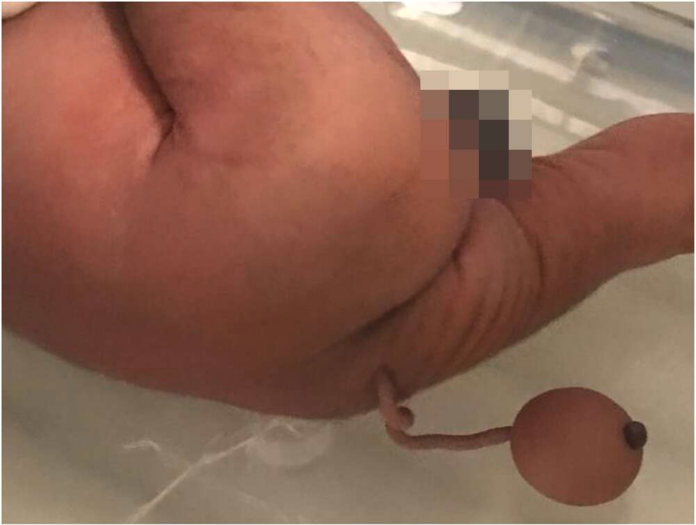
Baby in Brazil born with 5-inches-long “true” human tail
In an extremely rare case, a baby born in Brazil was born with a 5 inches long human tail. To date, only 40 such cases have been reported in previous literature. The case that has been described in the “Journal of Pediatric Case Reports”, further states that the baby was premature with any other complications. Examination showed that the patient was jaundiced and showed a “rounded fibroelastic appendage of approximately 4 centimetres in its largest diameter, supported by a 12 centimetres fibrous cord in the left paravertebral lumbosacral region”.
Doctors further ruled out possible systemic alterations via ultrasound. There were no systemic alterations revealed on the ultrasound. Tails on humans are either classified as “true” tails or “pseudo tails”. Pseudo tails are characterised by adipose or cartilaginous tissue and bone elements. According to the study, true human tails are very rare and only 40 cases have been reported. True or real tails are embryonic tails that remain until birth. Embryos usually form a small tail at around 4 weeks which at around 6 to 12 weeks are absorbed by white blood cells. In very rare cases, as with this case, the tail is not broken by the white blood cells and remains with the fetus after birth.
In this case, the team of doctors managed to remove the tail with no further complications
However, in some cases, the tail may even be curled or twitched. Doctors investigated other potential conditions that could be present in the boy before the removal of the tail. “Due to the common ectodermal origin between the skin and the central nervous system, it is essential that the pediatrician or pediatric surgeon investigate the presence of hidden spinal dysraphism in patients with suspected skin lesions, as they may be the only visible abnormality and early diagnosis can prevent evolution to severe neurological changes,” the team wrote.
Studies have shown that spina bifida is often associated with having a true tail. However, in this case, the infant did not have any underlying medical conditions. A cause for the “true” tail could not be concluded. Though it was noted that the mother was treated with first-generation cephalosporin for a urinary tract infection and continued to smoke 10 cigarettes a day, even during pregnancy. No further problems were reported following the removal of the tail and the boy was perfectly healthy.
Source: Journal of Pediatric Case Reports.



